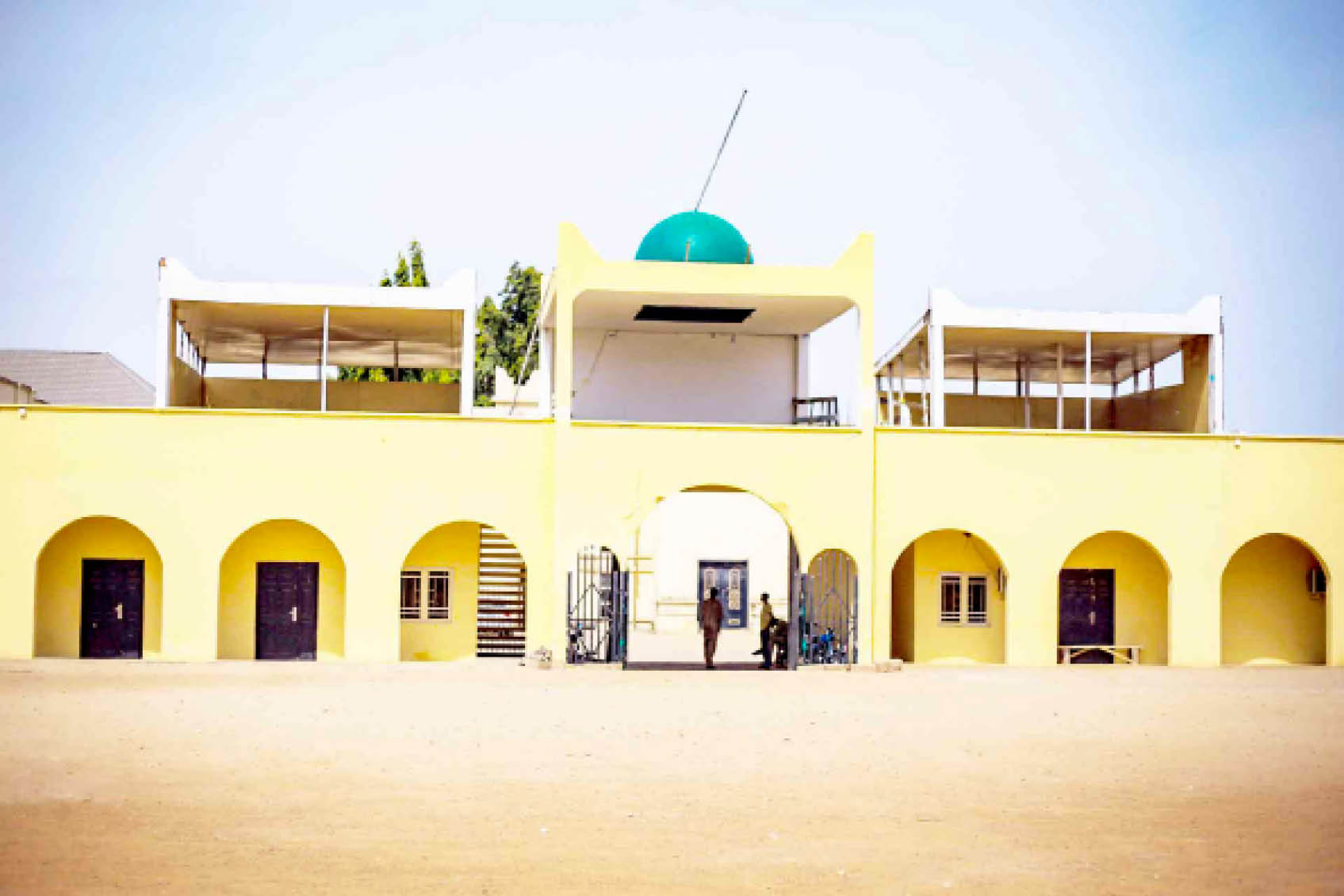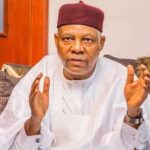The history of the Gombe Emirate Council dates back to 1804, after the Fulani Jihad, when it was founded by Modibbo Bubayero, a follower of Sheikh Usman Dan Fodio.
Bubayero was one of the disciples of Sheikh Usman Dan Fodio, the leader of the Jihad that led to the founding of Islamic states under the Sokoto Caliphate, 220 years ago.
Bubayero, who was the first ruler of Gombe, made Gombe-Abba his headquarters, a town located north of present Gombe town, some few kilometres away from the present Dukku town in Dukku Local Government Area of the state.
According to oral records, Gombe Emirate at one time extended from Gombe-Abba in present Dukku LGA to as far as Jalingo, the present capital of Taraba State, a distance of over 380 kilometres.
When the British conquered Gombe in 1902, they moved the capital of Gombe emirate to Nafada in 1913, and later to present Gombe town, approximately 118 kilometres from Nafada in 1919.
From the founding of Gombe Emirate in 1804 and relocation of the emirate to its present location in Gombe, 11 emirs, including the founder, Modibbo Bubayero, have ruled the emirate, seven of them from Gombe-Abba.
The seven emirs that ruled in Gombe-Abba town are; Bubayero, who ruled from 1824, when he established the town until his death in 1841. He was buried in his palace, a few metres away from the central mosque.
He was succeeded by his first son, Emir Sulaiman (1841-1844) who spent just three years on the throne; he died in Kano on his way to Gombe-Abba from Sokoto, and was buried there. He was succeeded by his brother, Emir Muhammad Kwairanga (1844-1882) who reigned for 38 years and was buried near his father’s tomb.
Kwairanga was succeeded by his surviving eldest son, Emir Abdulkadir Zailani (1882-1888) in 1882. He died after six years on the throne; he was buried in Birin Bolewa.
Zailani was succeeded by his brother, Emir Hassan (1888-1895) who died after ruling for only seven years. He was buried in Dukku.
The next emir that ruled in Gombe-Abba was Emir Tukur (1895-1898), who was actually the last emir to administer Gombe as the component of the Sokoto Caliphate; died after just three years reign and was buried near his father and grandfather’s tomb.
Thus, Emir Umaru (1898-1922) who succeeded Emir Tukur was the last emir to rule from Gombe-Abba. It was during his reign that the British subdued Gombe emirate and ordered him to relocate to Nafada and afterward to Gombe.
The remaining four emirs that ruled in present Gombe are: Haruna Umaru 1922-1935, Alhaji Abubakar Umar 1936-1984, Alhaji Shehu Usman Abubakar 1984-2014, and the present Emir, Abubakar Shehu Abubakar III, who started his reign one decade ago on June 6, 2014.
At the time of the creation of Gombe State from the then Bauchi State by General Sani Abacha on October 1, 1996, the Gombe Emirate had only one first class emir, Emir of Gombe, late Alhaji Shehu Usman Abubakar. He supervised seven district heads in Dukku, Funakaye, Nafada, Yamaltu/Deba and Akko Local Government Areas.
However, in 2002, the administration of former late Governor Abubakar Habu Hashidu broke Gombe Emirate into parts and created nine emirates in Dukku, Funakaye, Nafada, Deba, Yamaltu, Akko, Pindiga, Jara and Gona.
When former Governor Muhammad Danjuma Goje assumed office in 2003, he dissolved the Jara, Gona, Funakaye and Nafada emirates. However, he later restored them with the exception of the Jara Emirate.
With the break-up of the Gombe Emirate into several emirates in the last 22 years, the emirates now consist of only two LGAs of Gombe and Kwami respectively, against five LGAs in the past.
However, the Emir of Gombe, being the oldest among the emirates doubles as the Chairman of the Gombe Council of Traditional Rulers and Chiefs in the 11 LGAs of Billiri, Kaltungo, Akko, Balanga, Yamaltu/Deba, Dukku, Nafada, Shongom, Gombe and Funakaye.
The council of chiefs comprises 15 emirs and chiefs who oversee several district and village heads across the 11 LGAs.
They are: the Emir of Gombe, Alhaji Abubakar Shehu Abubakar, as Chairman of the council; Mai Kaltungo, Engineer Saleh Muhammad as Deputy Chairman, Emir of Dukku, Alhaji Haruna Abdulkadir Rasheed; Mai Tangale, Danladi Sanusi Maiyamba; Emir of Deba, Alhaji Ahmed Usman; Emir of Nafada, Alhaji Muhammad Dadum Hamza and Emir of Funakaye, Alhaji Yakubu Muhammadu Kwairanga.
The other emirs are: Emir of Pindiga, Alhaji Mohammed Seyoji Ahmad; Polo Dadiya, Alhaji Abdulkadir Abubakar Galadima; Ndugura Cham, Mr James Chachis; Mai Tula, Abubakar Atare Buba; Bala Waja, Alhaji Mohammed Danjuma Mohammed; Lamido Akko, Alhaji Ahmad Atiku; Emir of Yamaltu, Alhaji Abubakar Aliyu and Lamido Gona, Alhaji Umar Abdulkadir Abdussalam.
Among the features of the emirates are: the awards of traditional titles to sons of the states, especially those who have distinguished themselves in many areas like business, civil service and politics, among others.
The prominent traditional title holders include: Governor Muhammadu Inuwa Yahaya (Dan Majen Gombe), former Governors Muhammad Danjuma Goje (Sarkin Yakin Gombe) and Ibrahim Hassan Dankwambo (Talban Gombe); Ambassador Ibrahim Yerima Abdullahi (Sarkin Bai Gombe); Dr Aliyu Umar Modibbo (Dan Buram Gombe), Alhaji Jamilu Isiyaku Gwamna (Sardaunan Gombe), Alhaji Farouk Bamusa (Sarkin Arewan Gombe), Alhaji Umaru Kwairanga (Sarkin Fulanin Gombe) and Alhaji Auwalu Lawan (Sarkin Sudan Gombe).
How Abubakar Shehu Abubakar III ascended the throne
Abubakar Shehu Abubakar III (Santurakin Gombe) emerged as the 11th emir of Gombe on June 6, 2014, after four days of deliberations by the king makers, following the demise of his father, Alhaji Shehu Usman Abubakar 11.
Prince Abubakar, then a 37-year-old, emerged as emir from among 10 other contenders for the throne, among them, his elder brother, Mohammed Shehu Abubakar.
Until his appointment as emir, he held the prestigious and historic title of Santurakin Gombe, the same title his grandfather and namesake, the 9th Emir of Gombe, Abubakar Umar, held before he ascended the throne of Gombe emirate.
Likewise, his father, the 10th emir, Shehu Abubakar was promoted from Santuraki to emir in 1984. As such, his highness’s journey to the exalted throne could be said to have started the day his father turbaned him as Santuraki.
Presenting the letter of appointment to the new emir on behalf of then Governor Ibrahim Hassan Dankwambo, the Secretary to the State Government, late Abubakar Sule Bage, said “Based on the three names submitted to the governor for his approval and after wide consultations, the governor finally approved the first name on the list and he is Abubakar Shehu Abubakar”.
The acting chairman of the newly reconstituted Gombe kingmakers’ council at that time, late Alhaji Magaji Mu’azu (Ubandoman Gombe), said the council had received 10 applications from eligible candidates for the post and it deliberated and pruned the number to three, which was subsequently transmitted to the state government.

 Join Daily Trust WhatsApp Community For Quick Access To News and Happenings Around You.
Join Daily Trust WhatsApp Community For Quick Access To News and Happenings Around You.


